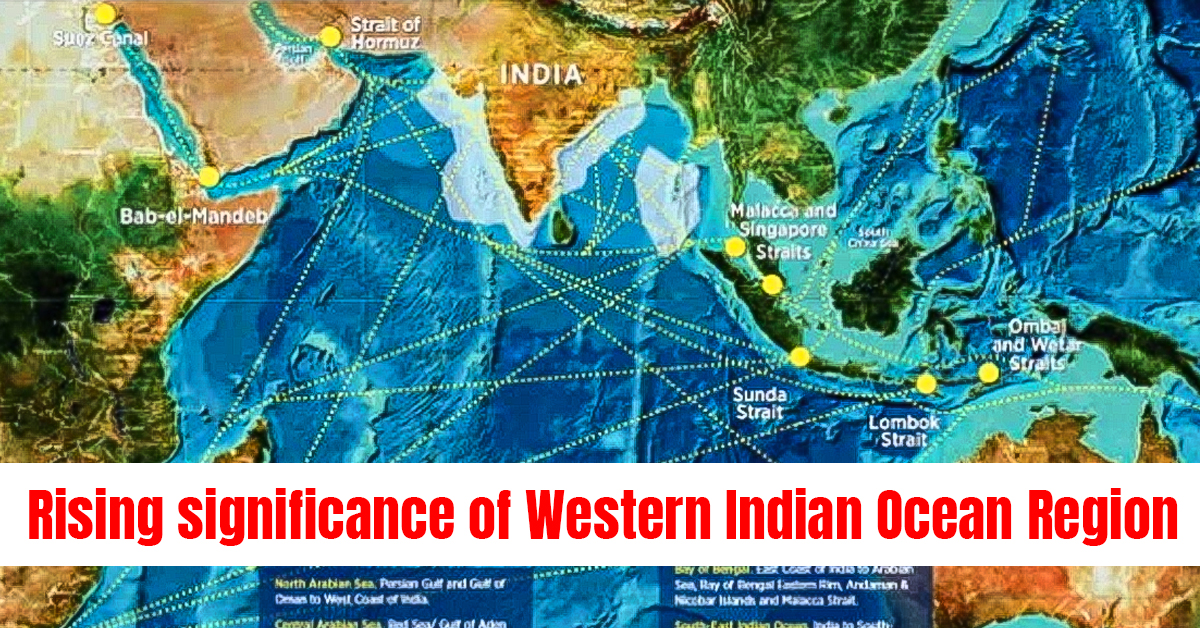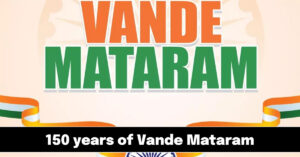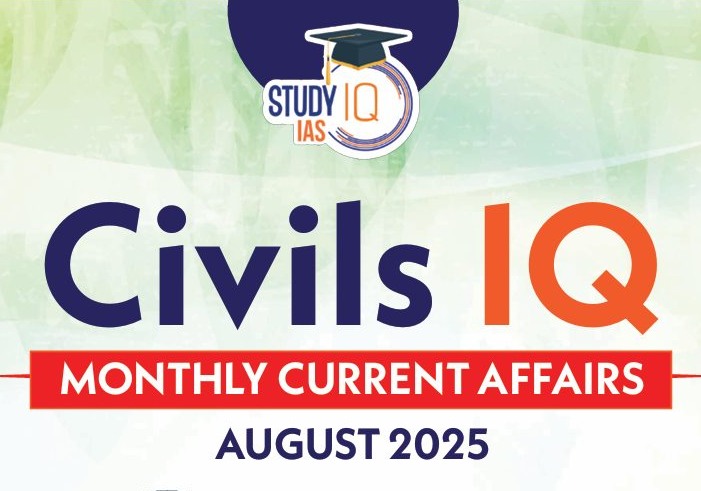Table of Contents
The Western Indian Ocean (WIO) has emerged as one of the most strategically significant maritime regions in the 21st century. Once viewed as a remote stretch of ocean with limited geopolitical weight, it now stands at the crossroads of trade, security, and diplomacy. The WIO connects Africa, the Middle East, and Asia—regions that together drive global energy, commerce, and political influence. As the balance of power in the Indo-Pacific shifts, the WIO has become a focal point for both competition and cooperation among major powers, including India, China, the United States, and France.
Geographical Scope and Strategic Importance
The Western Indian Ocean extends from the eastern coast of Africa to the Arabian Sea, encompassing countries such as Somalia, Kenya, Tanzania, Mozambique, South Africa, Comoros, Madagascar, Seychelles, Mauritius, and Réunion. This vast region hosts nearly 36 countries and 40% of the world’s coastline, making it a vital hub for maritime trade and energy flow.
Crucially, the WIO connects three of the world’s most important maritime chokepoints — the Strait of Hormuz, Bab el-Mandeb, and the Mozambique Channel. These narrow passages handle a significant portion of global oil and gas shipments, underscoring the WIO’s centrality to global energy security. The region also serves as a bridge between the African continent and Asia, facilitating economic, cultural, and strategic exchanges across the Indo-Pacific.
Maritime Security Challenges in the WIO
Despite its promise, the Western Indian Ocean faces persistent security and governance challenges that threaten its stability and prosperity.
1. Piracy and Armed Robbery
Piracy off the coast of Somalia continues to endanger shipping lanes, even after a decade of decline. Recent disruptions in the Red Sea and Gulf of Aden have reignited concerns about maritime safety and trade continuity.
2. Illicit Trafficking
The WIO is a major route for narcotics smuggling and illegal trafficking. Indian Navy operations, such as the seizure of 2,500 kg of narcotics by INS Tarkash, highlight the ongoing threat of transnational crime across the region.
3. Non-Traditional Threats
The region is also vulnerable to climate change, illegal fishing, and maritime disasters. Rising sea levels, coral bleaching, and declining fish stocks threaten both ecosystems and livelihoods. Strengthening Maritime Domain Awareness (MDA) and real-time data sharing among regional actors has become a necessity.
4. China’s Expanding Presence
China’s growing naval activity and Belt and Road Initiative (BRI) investments have reshaped the WIO’s strategic dynamics. Beijing has established infrastructure projects across Djibouti, Gwadar (Pakistan), and Tanzania, while deploying research and surveillance vessels that serve dual scientific and military purposes. China’s 48th Naval Escort Fleet in the Gulf of Aden signals its sustained interest in projecting power and protecting its trade routes in the Indian Ocean.
India’s Maritime Strategy and Regional Engagement
India’s approach to the Western Indian Ocean contrasts sharply with China’s. It is anchored in partnership, trust, and a rules-based maritime order rather than unilateral dominance.
1. SAGAR Doctrine (Security and Growth for All in the Region)
Launched by Prime Minister Narendra Modi, the SAGAR initiative integrates defence cooperation, humanitarian aid, capacity building, and environmental protection. It embodies India’s inclusive vision for a secure and prosperous Indian Ocean.
2. Institutional Mechanisms
The Information Fusion Centre – Indian Ocean Region (IFC–IOR) in Gurugram serves as a regional intelligence hub, linking India with African, Gulf, and Indo-Pacific partners for real-time monitoring, disaster management, and climate resilience.
3. Defence Partnerships
India participates in the Combined Maritime Forces (CMF) and conducts regular naval exercises such as Konkan 2024 with France and the UK. Access to Duqm Port in Oman and Réunion Island (France) enhances India’s reach for logistics and rapid response.
4. Economic and Environmental Cooperation
Through projects like SOLSTICE–WIO, endorsed by INCOIS, India promotes sustainable ecosystem research and livelihoods in coastal communities. The WIO’s natural resources, valued at over USD 300 billion, present immense opportunities for the blue economy.
Africa’s Central Role in the WIO
Africa is at the heart of the Western Indian Ocean’s strategic landscape. India’s partnerships across the continent emphasize developmental cooperation alongside security engagement.
-
Mauritius: Over $680 million invested in infrastructure, healthcare, and port development at Port Louis.
-
Seychelles: Joint naval training programs and capacity-building initiatives.
-
Mozambique: India’s participation in the $20 billion LNG project with TotalEnergies enhances regional energy security.
These efforts align with Africa’s Agenda 2063, promoting sustainable growth, skills development, and blue economy initiatives — positioning India as a reliable partner distinct from China’s debt-heavy model.
Way Forward
The Western Indian Ocean’s future depends on cooperative security and inclusive growth. India, along with partners like France, UAE, Japan, and the US, is working to safeguard key chokepoints and promote regional stability.
To sustain momentum, India must:
-
Deepen engagement through multilateral forums such as the Indian Ocean Rim Association (IORA).
-
Expand climate resilience initiatives for island nations.
-
Enhance connectivity and trade corridors linking Africa with South Asia.
India’s strength lies in balancing security with sustainability and power with partnership — a model that resonates deeply with smaller coastal and island states.
Conclusion
The Western Indian Ocean Region is no longer a peripheral theatre—it is the strategic heart of the Indo-Pacific. As global powers compete for influence, India’s approach based on inclusivity, mutual trust, and sustainable development sets it apart. For India, the WIO is not just a maritime frontier but a gateway to regional stability, energy security, and global leadership in the evolving Indo-Pacific order.


 Rethinking Urban Planning in India | Tra...
Rethinking Urban Planning in India | Tra...
 Early Warning Systems in the Himalayas: ...
Early Warning Systems in the Himalayas: ...
 150 Years of Vande Mataram: Celebrating ...
150 Years of Vande Mataram: Celebrating ...




















